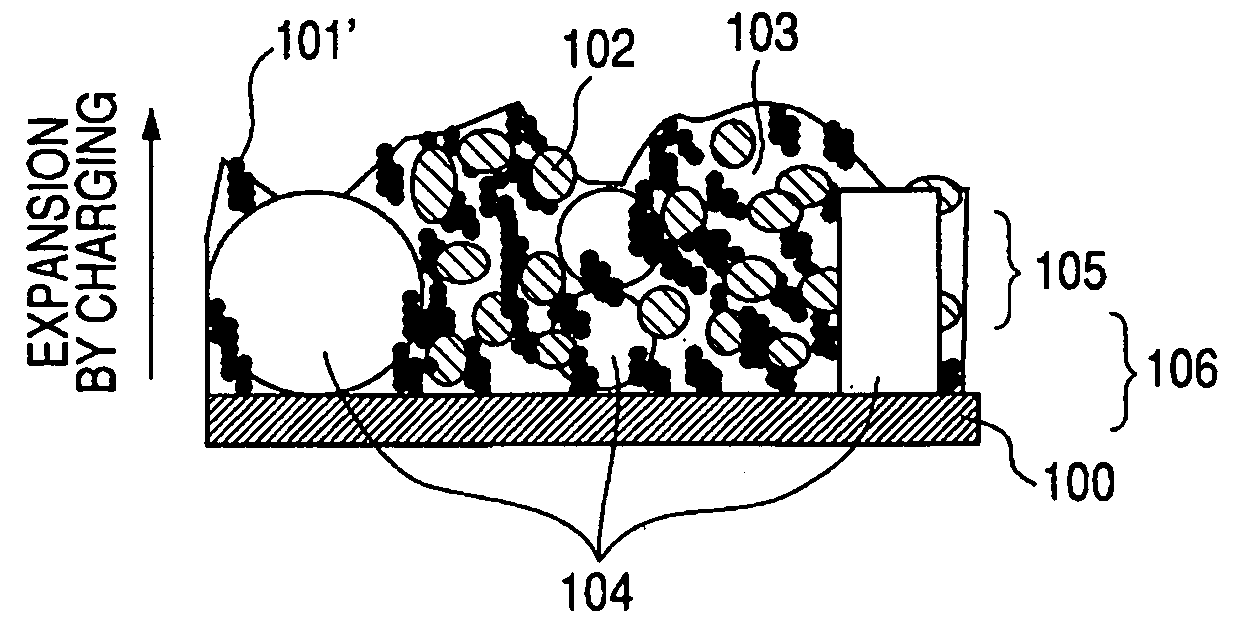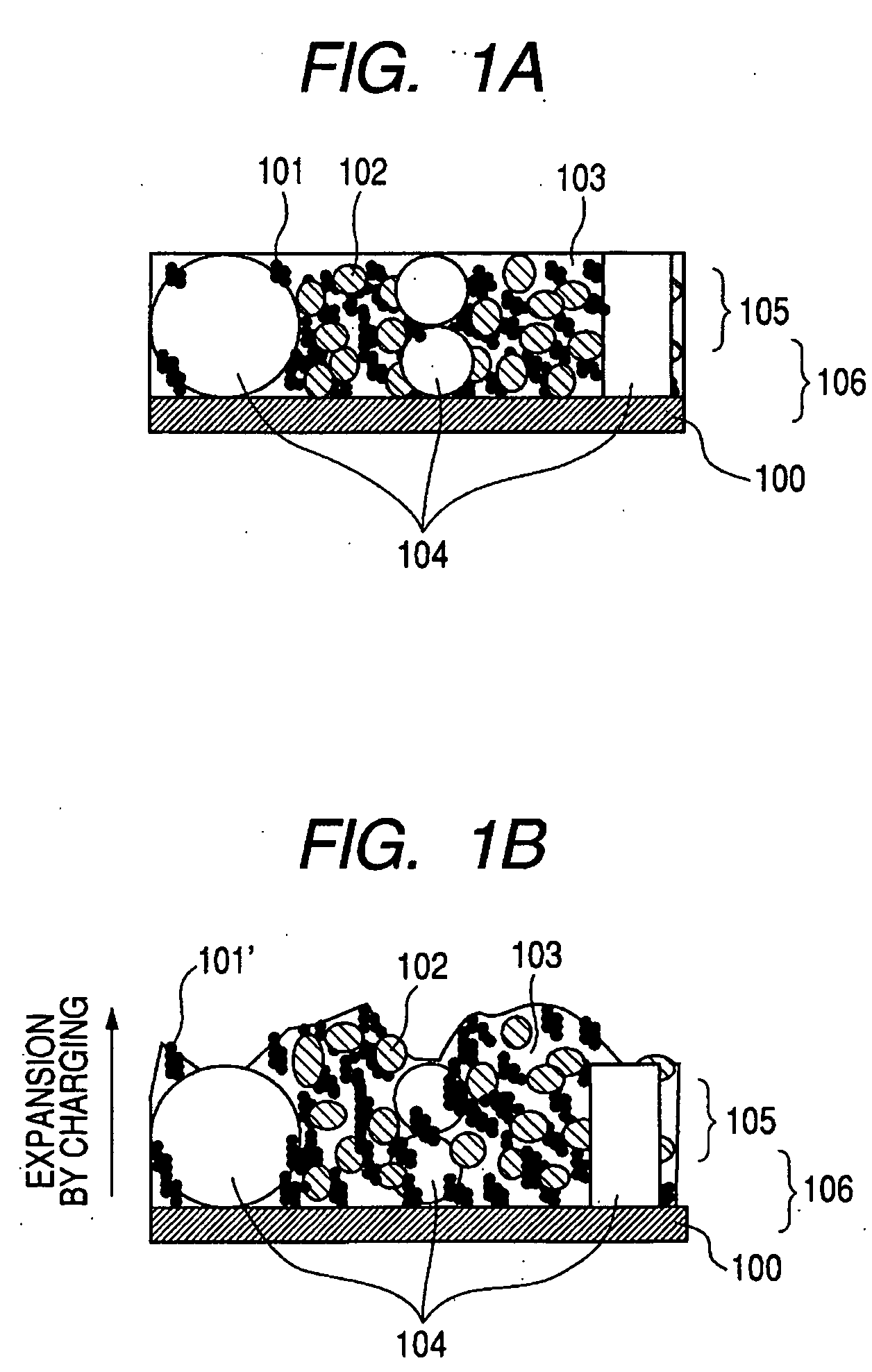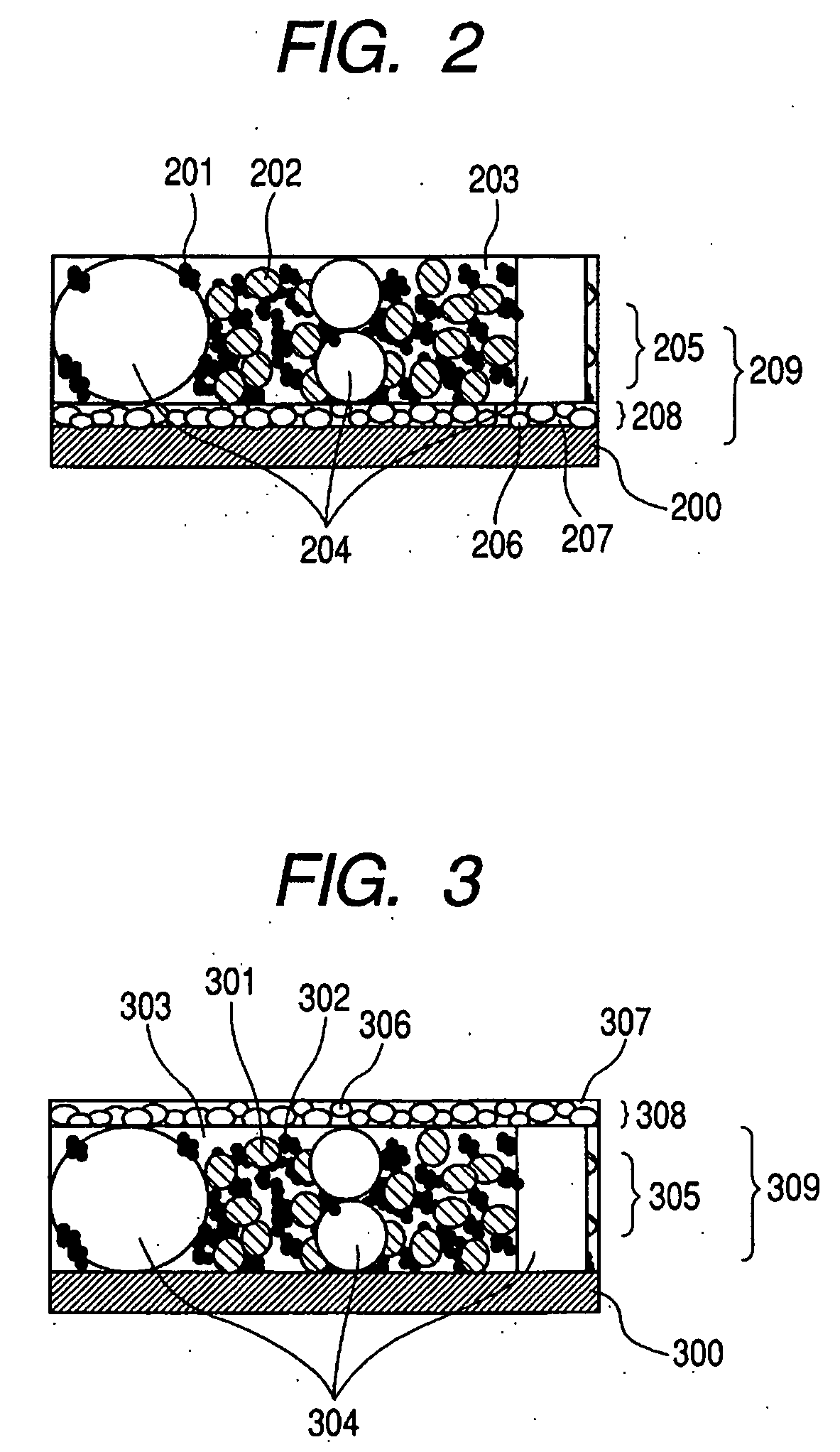Electrode structure for lithium secondary battery and secondary battery having such electrode structure
a secondary battery and electrode structure technology, applied in the manufacture of secondary cells, cell components, final product manufacturing, etc., can solve the problems of inability to realize the development of small, lightweight and high-performance secondary batteries is an urgent issue, and the ion battery cannot achieve a secondary battery with a high energy density. , the effect of high capacity and small capacity reduction
- Summary
- Abstract
- Description
- Claims
- Application Information
AI Technical Summary
Benefits of technology
Problems solved by technology
Method used
Image
Examples
example 1
(1) Preparation of Main Active Material of Negative Electrode
[0131] Silicon, tin and copper were mixed at an atomic ratio of 82.9:16.6:0.5 (weight ratio of 65:30:5) and molten under an argon gas atmosphere to produce a melt. Subsequently, powder of an Si—Sn—Cu alloy was obtained by means of “Water atomization process” of injecting the melt by highly pressurized water. Then, the obtained powder of the Si—Sn—Cu alloy was crushed in isopropyl alcohol by means of a media mill using a zirconia ball to produce fine powder of the Si—Sn—Cu alloy showing an average particle size of 0.3 μm. Then, graphite powder was added to the obtained fine powder of the Si—Sn—Cu alloy at an amount of 15 wt % and the mixture was crushed in an Attriter mill under an argon gas atmosphere by means of a stainless steel ball for 10 hours to produce fine powder of the Si—Sn—Cu alloy that is compounded with carbon. The obtained Si—Sn—Cu alloy-carbon compounded powder was analyzed by means of an X-ray diffractome...
example 2
[0142] A battery to be evaluated was prepared in the same manner as in Example 1 except that a copper foil having a ten point average height of Rz=2.1 μm and a thickness of 15 μm was used for the current collector of the negative electrode, and the prepared battery was evaluated.
example 3
[0143] The process as described below was used in place of the process of Example 1 to prepare a battery to be evaluated in an evaluation test.
(1) Preparation of Negative Electrode
[0144] A solution obtained by dispersing poly(2-ethylthiophene) at an amount of 10 wt % in a mixed solvent of ethylene carbonate and diethyl carbonate at a volume ratio of 3:7 and adding the obtained mixture to an N-methyl-2-pyrrolidone solution of a polyamide precursor (polyamic acid) such that poly(2-ethylthiophene) was 10 wt % of the solid part of the polyamide precursor (polyamic acid).
[0145] Then, the Si—Sn—Cu alloy-carbon compounded powder as the main active material, artificial graphite powder of pseudo-spherical particles with an average particle size of 22 μm, graphite powder with an average particle size of 5 μm as an auxiliary conductive material, and a solution of N-methyl-2-pyrrolidone as a polyamide precursor (polyamic acid) were mixed such that the weight ratio of the Si—Sn—Cu alloy-carb...
PUM
| Property | Measurement | Unit |
|---|---|---|
| Temperature | aaaaa | aaaaa |
| Length | aaaaa | aaaaa |
| Length | aaaaa | aaaaa |
Abstract
Description
Claims
Application Information
 Login to View More
Login to View More - R&D
- Intellectual Property
- Life Sciences
- Materials
- Tech Scout
- Unparalleled Data Quality
- Higher Quality Content
- 60% Fewer Hallucinations
Browse by: Latest US Patents, China's latest patents, Technical Efficacy Thesaurus, Application Domain, Technology Topic, Popular Technical Reports.
© 2025 PatSnap. All rights reserved.Legal|Privacy policy|Modern Slavery Act Transparency Statement|Sitemap|About US| Contact US: help@patsnap.com



